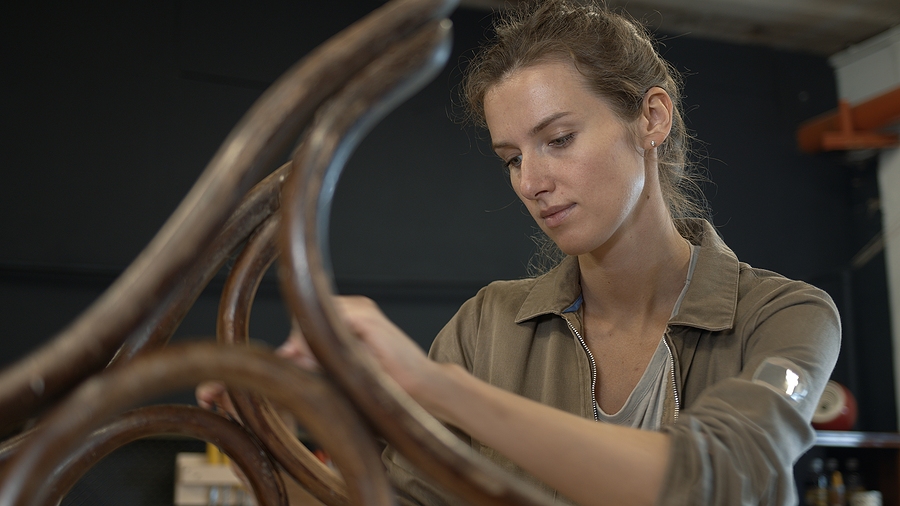Posted by Sandpaper America on Oct 12th 2023
Transform Your Antique: DIY Guide to Sanding Wood Furniture
Breathing new life into a piece of antique wooden furniture can be a rewarding endeavor. Not only do you get to preserve a part of history, but you also end up with a beautiful piece that adds character to your space. Welcome to our DIY guide to sanding wood furniture, a step-by-step journey into the world of furniture restoration. We've compiled a host of sanding tips and techniques that will help you restore your wooden treasures to their former glory.
Whether you're an experienced DIYer or a beginner, this guide will provide you with the knowledge and confidence you need to undertake your next restoration project. Let's dive in and explore the fascinating world of furniture restoration.

Why Sanding is Important
Before we delve into the actual process, let's first understand why sanding is a critical step in furniture restoration. Over time, wooden furniture accumulates scratches, dings, and other wear and tear marks that can make it look dull and unattractive. Additionally, the wood's surface may become uneven due to exposure to moisture or temperature changes. Sanding helps to smooth out these imperfections, providing a fresh and even surface for the next step in the restoration process. It also removes any existing finishes or paint, allowing you to start with a clean slate.
Choosing the Right Tools
The first step in sanding your wooden furniture is selecting the right tools for the job. The most commonly used tools for sanding are sandpaper, sanding sponges, and electric sanders. Each of these has its advantages and can be used for different purposes, depending on the furniture piece's size, shape, and condition.
Sandpaper comes in a variety of grits and is ideal for intricate surfaces or smaller projects. It requires elbow grease but provides more control and precision.Sanding sponges are flexible, making them suitable for uneven surfaces. They are also reusable, making them an Eco-friendly option. Electric sanders come in different types, such as orbital, belt, and hand sanders. These power tools make the job more efficient and can handle larger projects or tougher materials. Before starting the sanding process, make sure to wear safety gear, including a dust mask, goggles, and gloves.
Sanding Tips and Techniques
Now that you have your tools ready let's look at some tips and techniques to help you achieve the best results.
Start with coarse grit sandpaper: Depending on the level of damage or unevenness on your furniture piece's surface, start with a coarse grit sandpaper, such as 80 or 100. This will help to strip off any existing finishes and smooth out larger imperfections.
Sand with the grain: Always sand in the direction of the wood grain to avoid damaging it. Sanding against the grain can leave scratches that are difficult to remove.
Use a sanding block: For larger furniture pieces, use a sanding block to ensure an even and controlled sanding process. This will prevent uneven surfaces and over-sanding in certain areas.
Change grits gradually: As you progress with the sanding process, gradually move to finer grits, such as 120, 180, and finally 220. This will help to achieve a smooth finish without leaving any scratches.
Sand in stages: Depending on the furniture piece's condition, you may need to sand multiple times using different grits. Take breaks in between to inspect your progress and make sure you're not over-sanding or damaging the wood.
Don't forget the edges and corners: Use smaller pieces of sandpaper or a sanding sponge to reach tight spaces and corners. These areas are often the most neglected but can make a significant difference in the overall finish.
Clean off dust between sanding: As you progress through different grits, make sure to clean off any dust or debris before moving to finer grits. This will prevent scratches and ensure a smoother finish.
Finish with fine-grit sandpaper: Before moving on to the next step in the restoration process, use a fine-grit sandpaper, such as 220, to achieve a smooth and even finish.
Conclusion
With these sanding tips and techniques, you are now well-equipped to transform your antique wooden furniture. Remember to take your time, be patient, and enjoy the process. With a little elbow grease and some know-how, you can restore your wooden treasures to their former glory.
Sandpaper America is your one-stop shop for custom sanding supplies and quality sanding belts. Our expert team of professionals are dedicated to providing high-quality materials designed to last longer and perform better than any competitor on the market. We source only the best raw materials that have been tested to ensure they withstand even the toughest jobs. With our reliable products, we can guarantee you’ll get the job done right. Contact us at 1-800-860-7263 (SAND) to learn more about our sandpaper products or to place an order, today.
Related Posts:
How
to Choose the Right Sandpaper Grit For Your Project
The
Essential Guide to Restoring a Wooden Swing Set
How
to Sand Down an Old Rocking Chair

